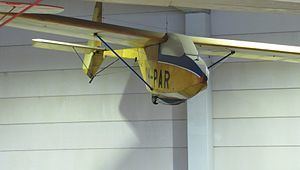Wingspan 12 m First flight September 1946 | Length 6.4 m | |
 | ||
Manufacturer | ||
The PIK-5 was a training glider produced in Finland in the 1940s and 1950s, equipping the country's gliding clubs with an aircraft greater in performance than primary gliders but less than competition sailplanes. The aircraft had a pod-and-boom configuration, with a high, strut-braced monoplane wing and a cruciform tail carried at the end of a tailboom that extended from a position high on the aft end of the pod.
Contents
The prototype first flew in September 1946 and testing continued until it was badly damaged in a crash in summer 1948 Over the subsequent months, the wings were repaired, and a new fuselage constructed to a revised design. This was completed the following winter, and flights recommenced. However, this aircraft, now known as the PIK-5B, was destroyed in a crash in summer 1951. Again, it was rebuilt with modifications, particularly to the wing structure, resulting in the PIK-5C version. This version first flew on 5 July 1952 and went on to become the pattern for around 30 similar machines that would be built over the ensuing years.
Variants
Specifications (PIK-5C)
Data from The World's Sailplanes:Die Segelflugzeuge der Welt:Les Planeurs du Monde Volume II
General characteristics
Performance
